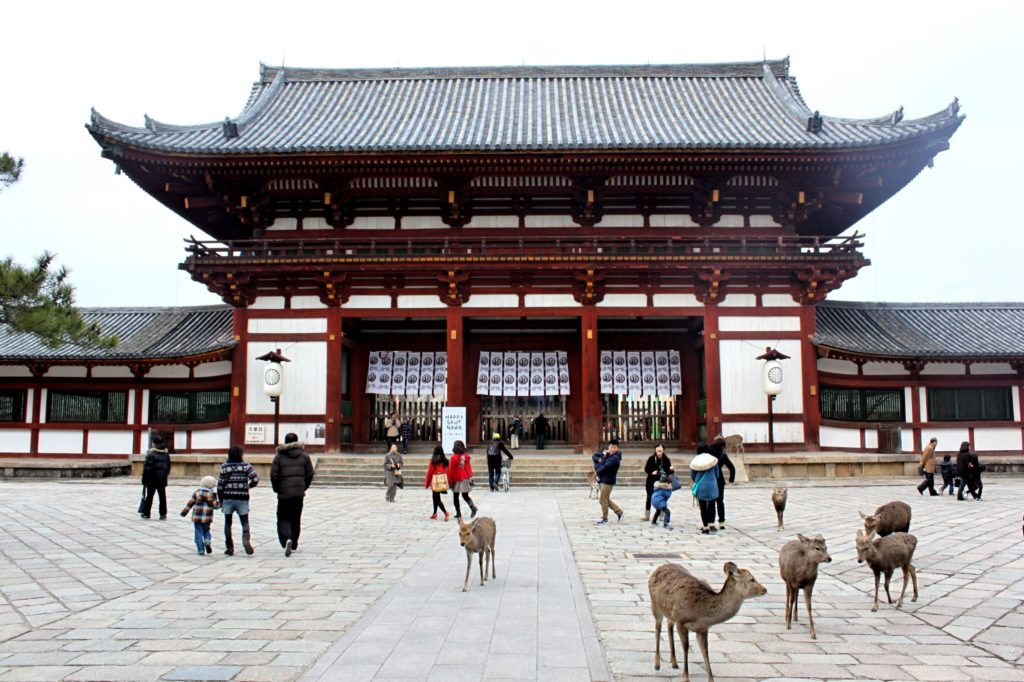You may know that Kyoto was the capital of Japan before Tokyo. But did you know Nara was the first permanent capital of Japan? The Nara Period (710-794) was an age of great cultural and societal growth, and the introduction of Buddhism to Japan. Today this beautiful, peaceful city offers historical temples, shrines, ruins, and gardens, including eight Unesco World Heritage Sites. It’s also home to countless deer, which are held sacred and allowed to roam the city freely. If you will be heading to west Japan this season, your journey awaits with these 8 things to do in Nara!
8 Things to Do in Nara
Todaiji Temple and the Great Buddha
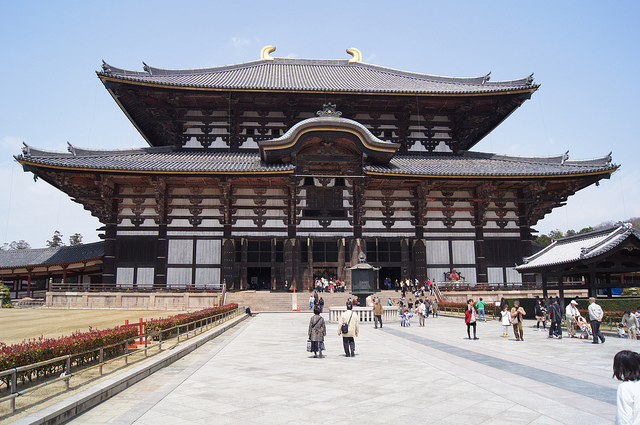
Todaiji, with its famous bronze Great Buddha statue, is one of Japan’s most important and historic temples. Its main hall, housing the Great Buddha, is one of the largest wooden structures in the world. The Great Buddha is 15 meters tall, and a masterful work of artisanship. When it was first cast, it used nearly all of the bronze in Japan! If you are traveling with children, don’t miss a wooden column with a hole to the side of the Great Buddha. It’s said that anyone that can crawl through the small hole will attain enlightenment! Those interested in Buddhist art may also want to check out the Todaiji Museum, which houses cultural artifacts from the temple’s collections.
Kasuga Taisha Shrine
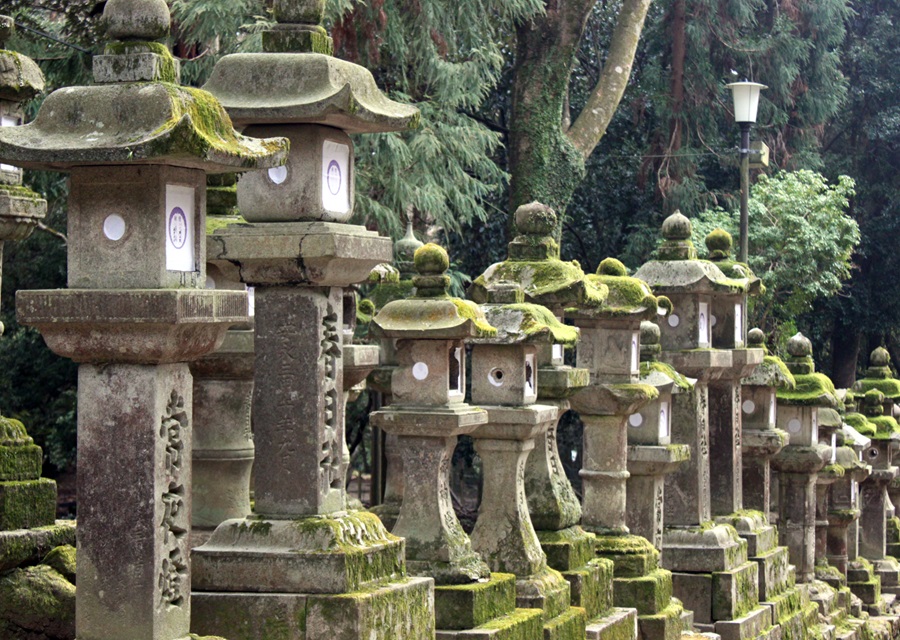
From Todaiji, walk up the mossy path lined with hundreds of stone lanterns towards Kasuga Taisha Shrine. The scenic walk itself is worthwhile, as is the sight of the red shrine buildings and bronze lanterns against the green background of moss and trees. Near the shrine is a botanical garden known for wisteria blossoms in late April and May.
Kofukuji Temple
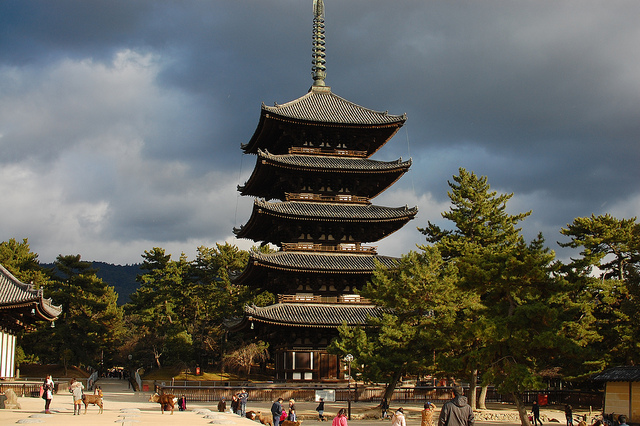
Kofukuji Temple was established in 710 under the auspices of the Fujiwara clan, one of the most powerful families in Japan’s history. Once a huge complex with around 175 buildings, it’s now most famous for its five-story pagoda and the Kokuhokan (National Treasure Museum), which houses an unrivalled collection of Buddhist sculptures and artwork.
Yakushiji Temple
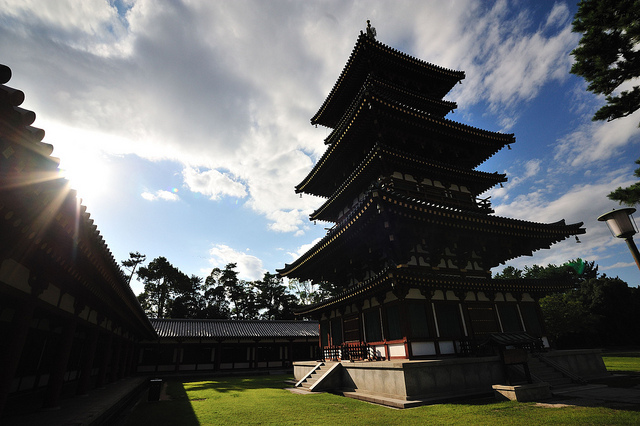
This temple in western Nara is located near Nishinokyo Station, a 25-minute trip from Kintetsu Nara Station. Yakushiji was constructed in the 700s by Emperor Tenmu and is the head temple of the Hosso Sect of Japanese Buddhism. Particularly of note is the temple’s strict symmetrical and geometric layout, with a main hall and lecture hall in the middle and pagodas on each side. The East Pagoda is the only structure that is original from 730, having survived the temple’s many fires. North of this main complex is the Genjo-sanzoin Garan, which has an interesting octagonal hall.
Horyuji Temple
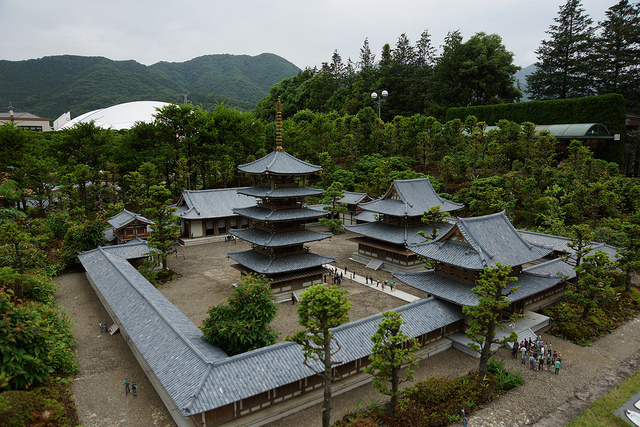
This sprawling complex is one of Japan’s largest temples and the oldest wooden structure in the world. It dates back to 607 when it was built by Prince Shotoku, a devout Buddhist, to house an image of the Yakushi (Medicinal) Buddha. The temple burned down in 670 but was soon rebuilt. The buildings contain many clay and bronze statues from the Nara Period. It’s a 20-minute walk from Horyuji Station, which is 12 minutes from JR Nara Station on the Yamatoji Line.
Heijokyo Palace Site
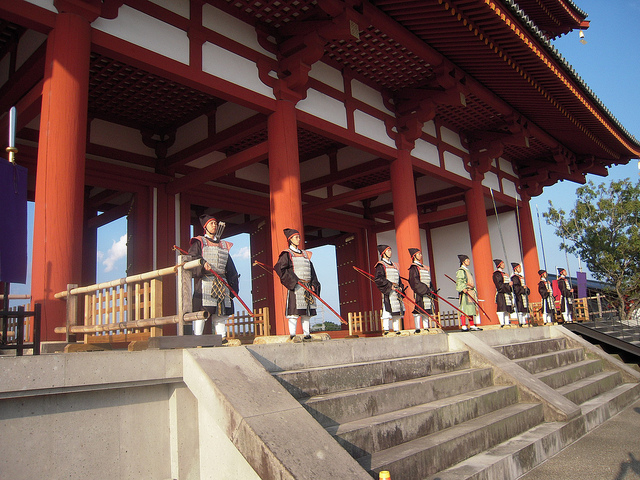
The main structures at the former Imperial Palace-the Suzaku Gate, the Daigoku-den (Council Hall), and the East Palace Garden-are modern reconstructions, but interesting examples of Nara Period architecture nonetheless. The area also exhibits the foundations of the former palace, preserved excavation areas, and two museums, the Heijo Palace Site Museum and the Heijokyo History Museum. It’s a 15-minute walk from Yamato-Saidaiji Station or can be reached by local buses.
Isuien and Yoshikien Gardens
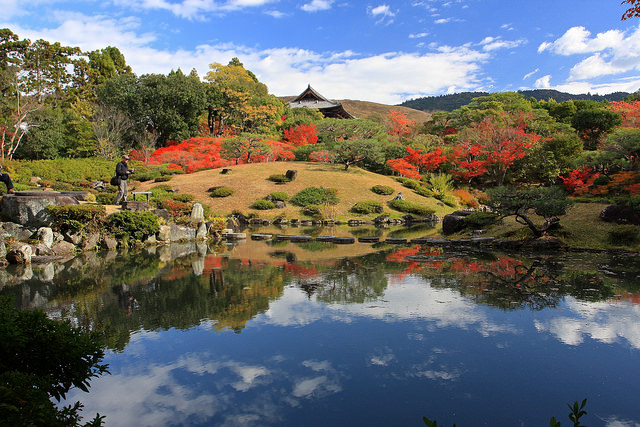
A small but attractive garden located next to Todaiji Temple, Isuien Garden makes use of the “borrowed” scenery of Todaiji’s Nandaimon Gate and Mount Wakakusayama. It features several tea houses and a small museum with artifacts from ancient China and Korea. On the other side of the Yoshikigawa River is the Yoshikien Garden, free for foreign visitors. It includes three separate types of Japanese gardens: a pond garden, a moss garden, and a tea ceremony garden.
Nara National Museum
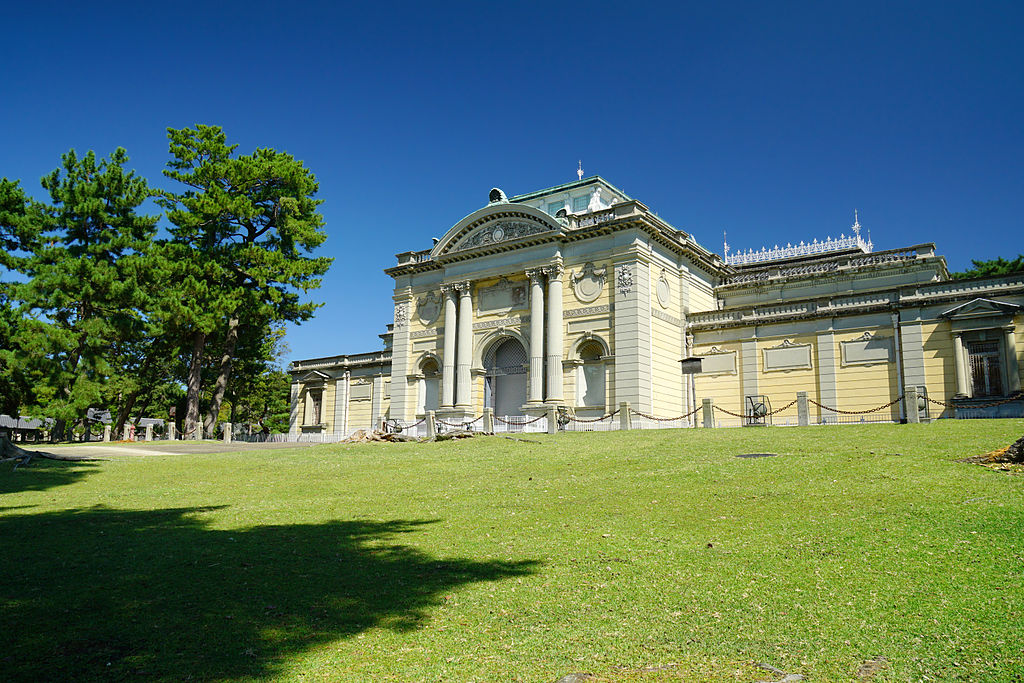
Across from Yoshikien Garden is the Nara National Museum. The Western-style building shows Meiji Japan architecture and houses one of the world’s best collections of Buddhist art. In the fall the museum hosts special exhibits with artifacts from the usually closed-access Todaiji Treasury.
Traveling to Nara
Kyoto to Nara
Nara is very easily accessible from Kyoto. Japan Railways (JR) offers direct trains from Kyoto Station to Nara Station twice an hour. The trip takes 45 minutes and costs 710 yen and is also covered by the Japan Rail Pass. Another option is Kintetsu Railways, which offers trains from Kyoto Station to Kintetsu Nara Station twice an hour. The trip takes 35 minutes and costs 1,130 yen. Kintetsu Nara offers slightly closer access to Nara’s main attractions around Todaiji and Nara Park.
Osaka to Nara
From Osaka, you can also take a JR train or a Kintetsu train. JR operates Yamatoji rapid trains every hour between JR Osaka and JR Nara Station. The trip takes 45 minutes and costs 800 yen. (Alternatively, the same train runs from Tennoji Station and takes 30 minutes.) Both are covered by the Japan Rail Pass. Kintetsu offers limited express and regular express trains from Namba Station in Osaka to Kintetsu Nara Station. Limited express trains take 30 minutes and cost 1,070 yen, while express trains take 40 minutes but cost only 540 yen.
Getting Nara WiFi
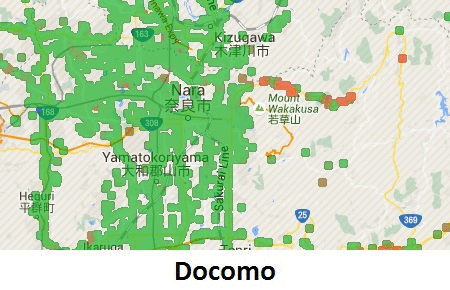
Though sometimes dwarfed in the shadows of all Kyoto has to offer, these 8 things to do in Nara make it an essential stop for anyone interested in gaining a deeper understanding of Japan’s ancient history and culture. Nara has much to offer, including exceptional art collections, beautiful gardens, and some of the oldest and most culturally significant buildings in Japan (and of course, plenty of deer sightings!). What Nara can’t necessarily offer is a great WiFi connection. Of the three major network providers-Docomo, au, and SoftBank-the best option for staying connected in Nara currently seems to be Docomo, Japan’s widest coverage provider. Fortunately, Sakura Mobile can help you stay connected with our Pocket WiFi and SIM Card Rentals.

